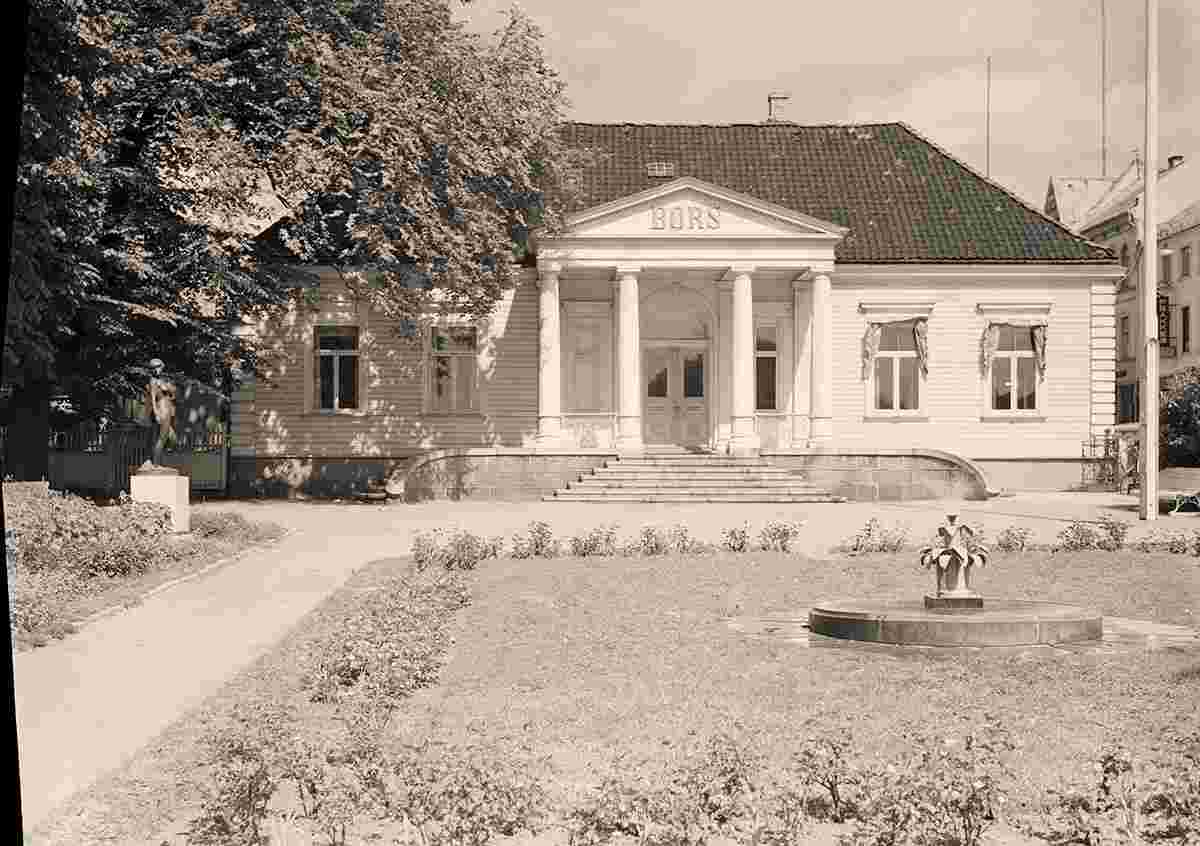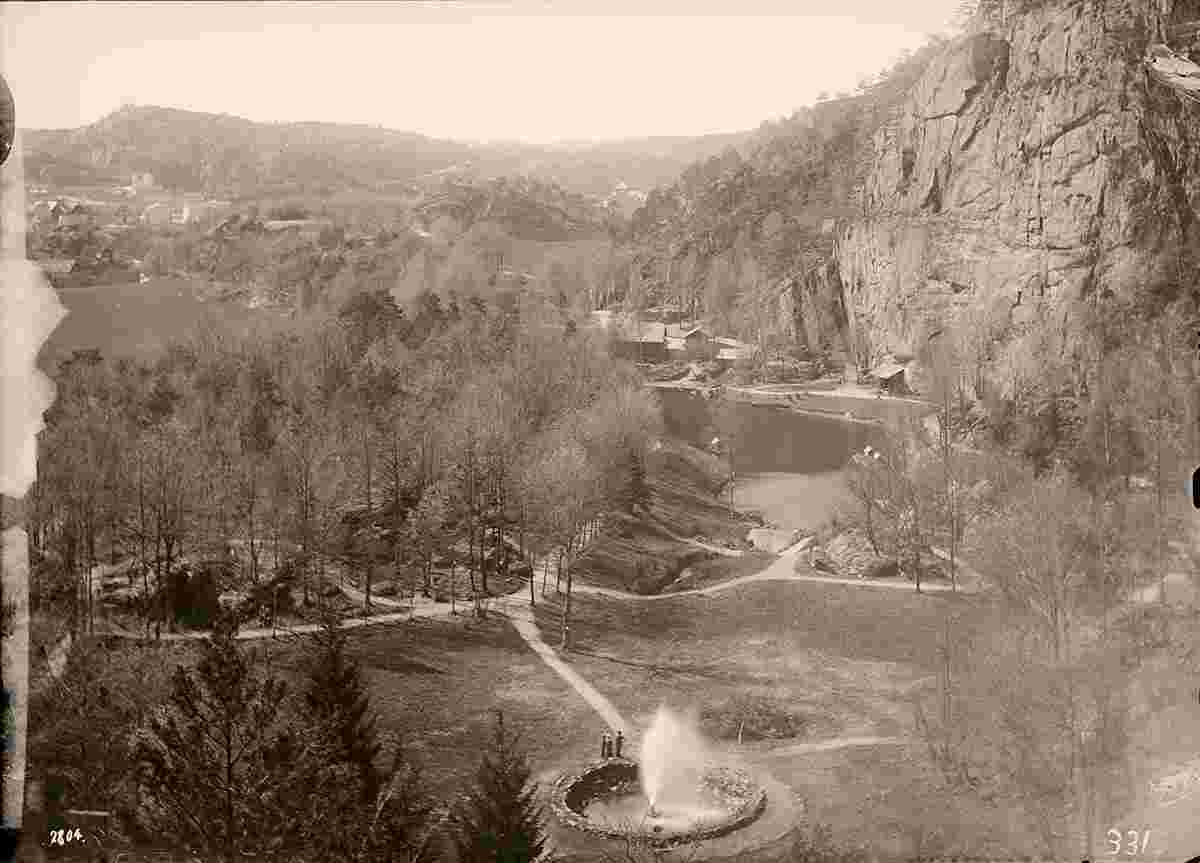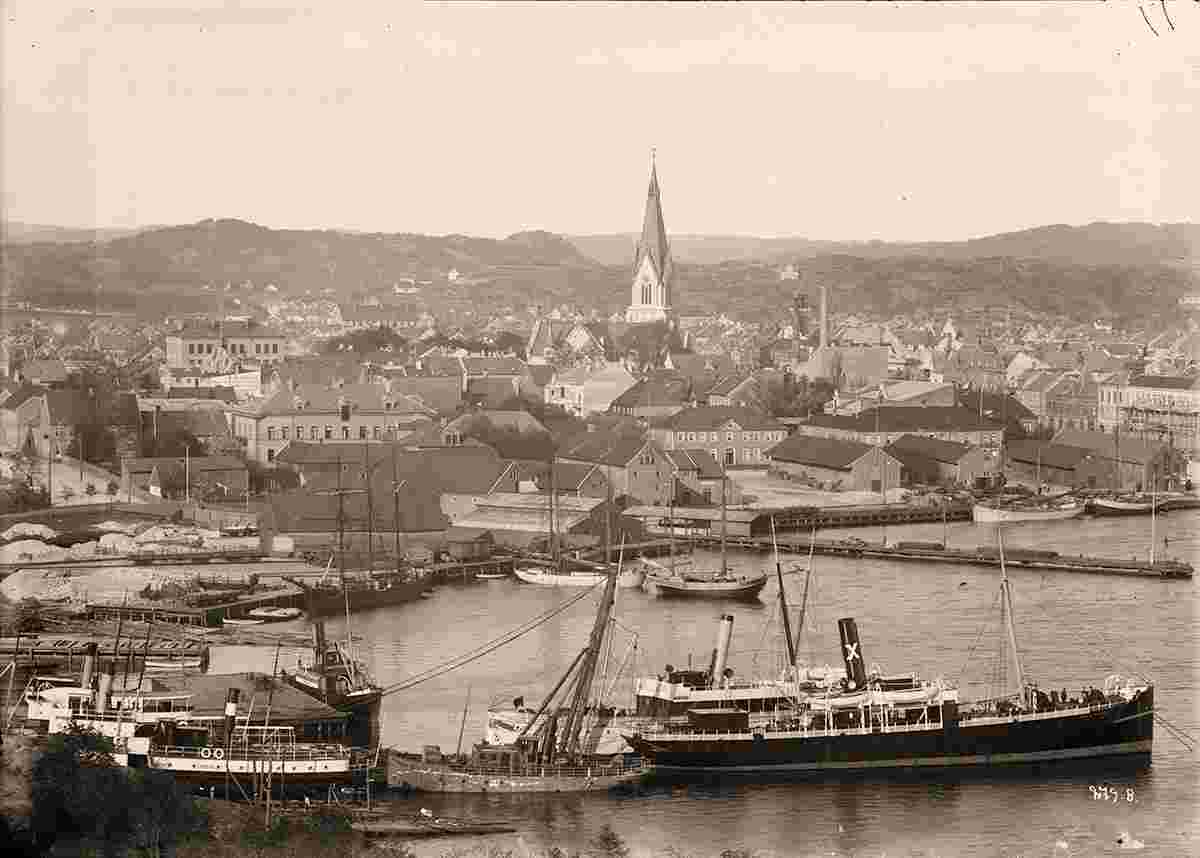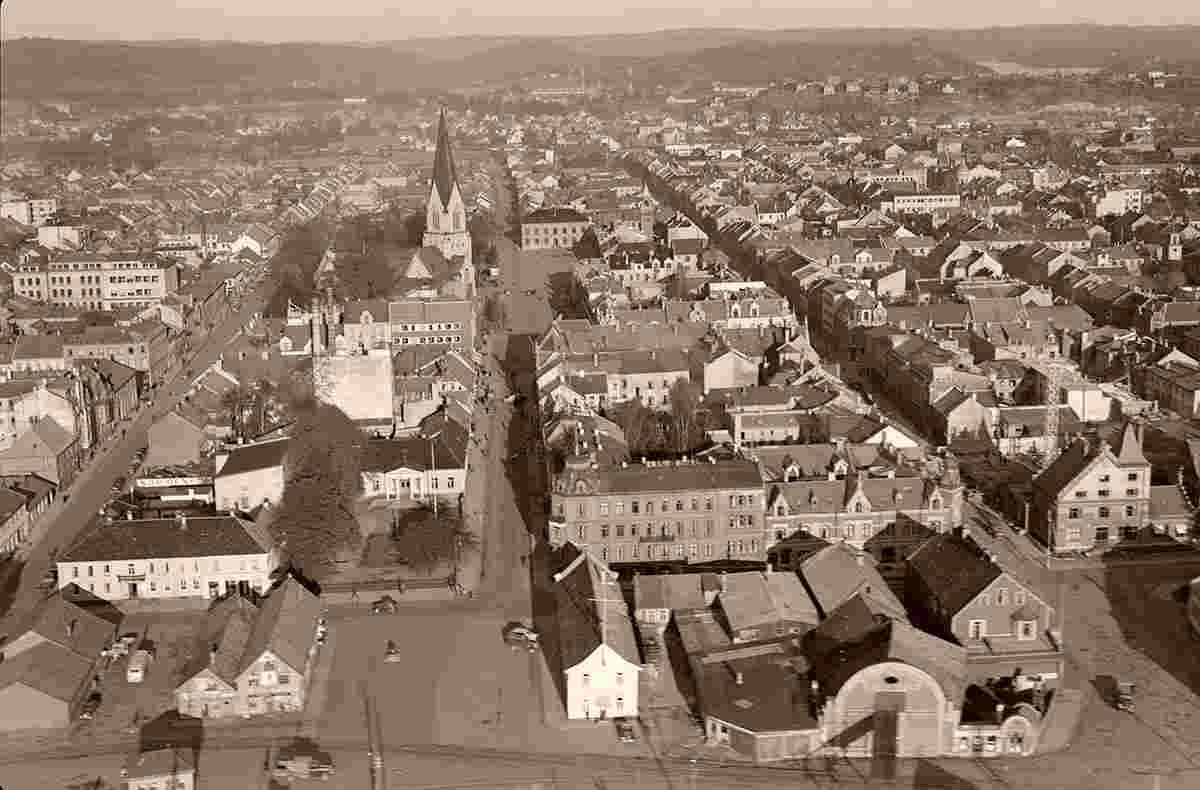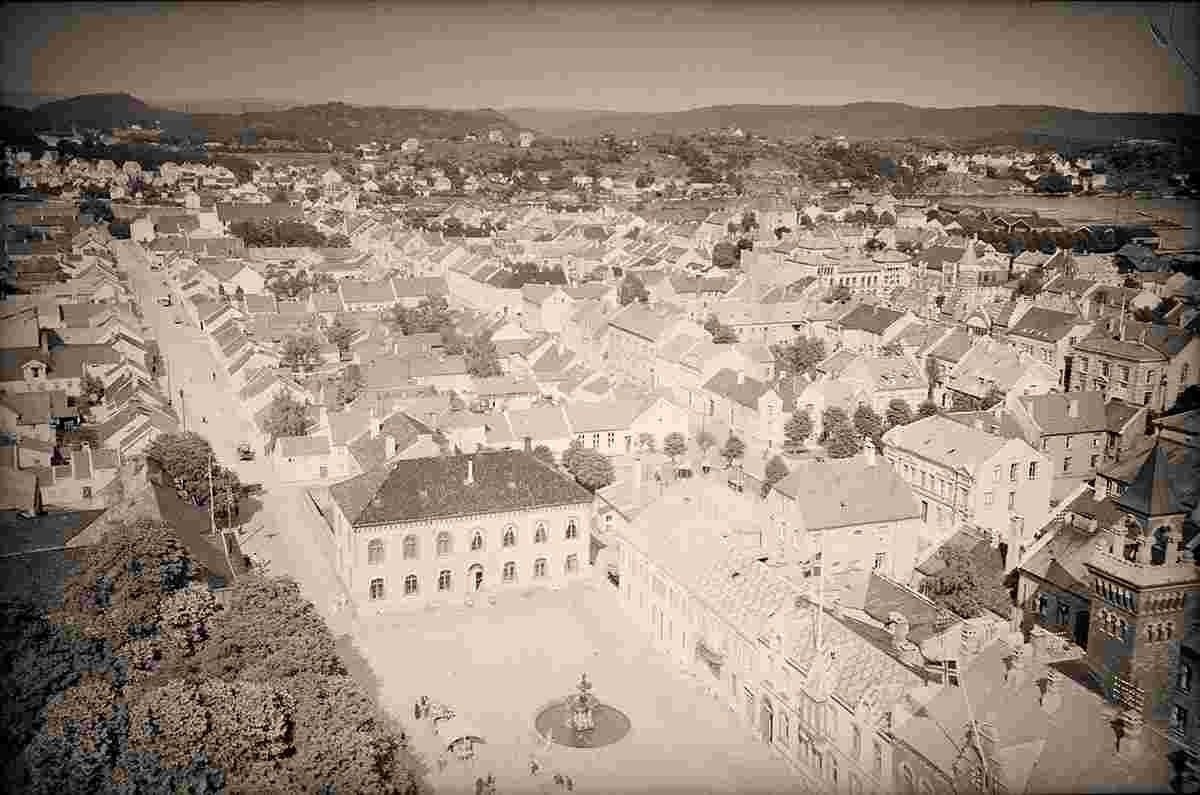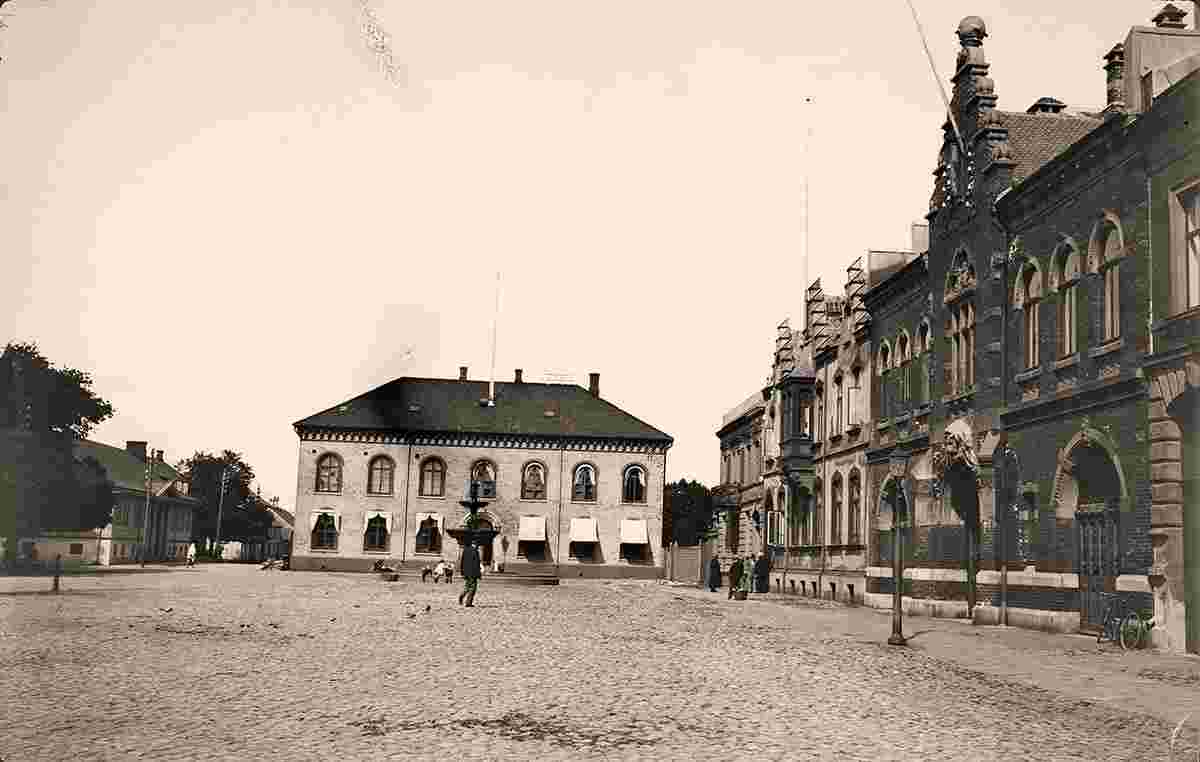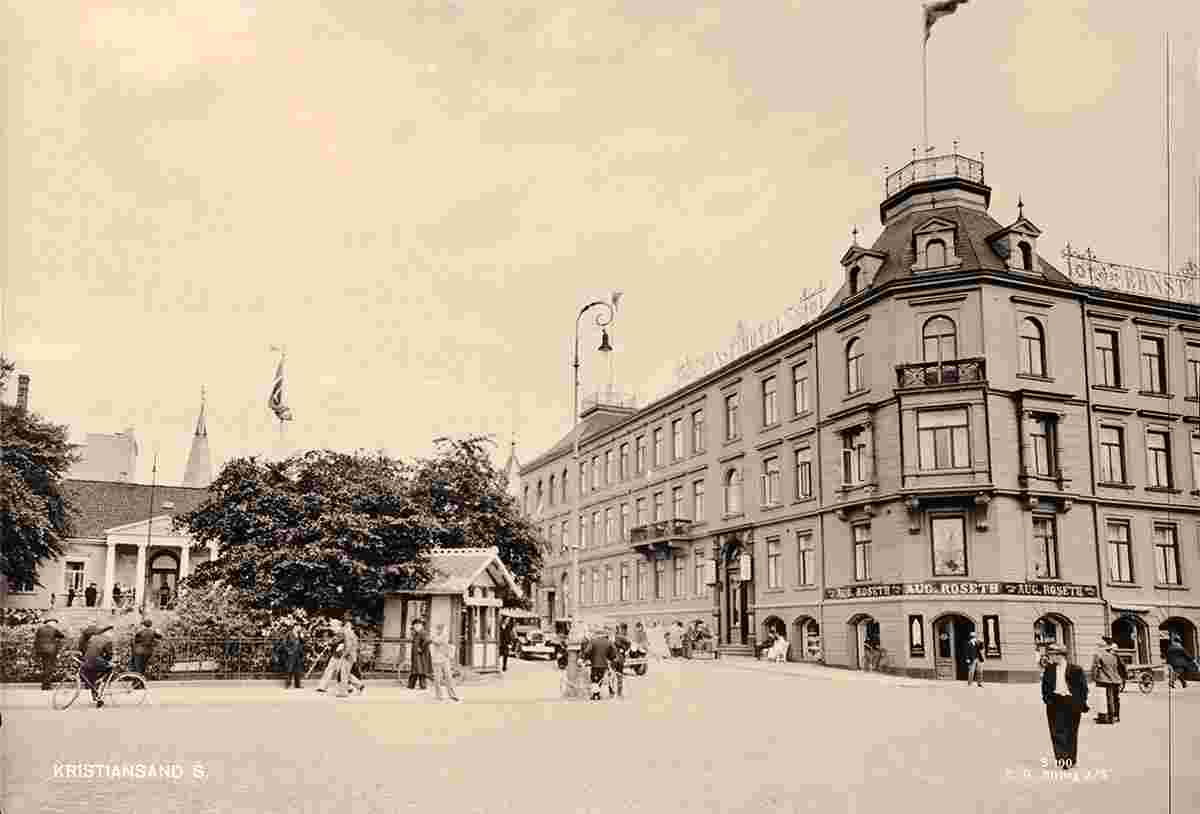Historical and old photos of Kristiansand, Agder
HistoryPrehistory and early historyThe Kristiansand area has been inhabited since prehistoric times. In 1996, the well-preserved skeleton of a woman dating to approximately 6500 BC was discovered in the neighbouring municipality of Søgne. This demonstrates very early habitation of the archipelago. Grauthelleren (Grathelleren), located on Fidjane, is believed to be a Stone Age settlement. The first discovery in Norway of a Sarup enclosure (a Neolithic form of ritual enclosure first identified at Sarup on the Danish island of Funen) was made in 2010 at Hamresanden and dates to c. 3400 BC. Archaeological excavations to the east of Oddernes Church have uncovered rural settlements that existed during the centuries immediately before and after the start of the common era. Together with a corresponding discovery in Rogaland, these settlements are unique in the Norwegian context; isolated farms, rather than villages, were the norm in ancient Norway. Other discoveries in grave mounds around the church, in the Lund section of the city, indicate habitation beginning c. 400 AD, and 25 cooking pits that were found immediately outside the church wall in 1907 are probably even older. One of the largest pre-Christian burial grounds in South Norway was formerly located to the south and west of the church. A royal centre is thought to have existed at Oddernes before 800, and the church was built around 1040. Before the stone church was built, one or perhaps two wooden post churches are believed to have stood on the same spot. A few years ago, excavations were carried out under and around the runestone when it was moved to the church porch; the grave finds indicated that the churchyard must already have been unusually large in the High Middle Ages. This means that the area must have had a large population before it was reduced by the Black Death. In the 14th and 15th centuries, there was already a busy port and a small village on the Otra at the lowest point of today's Lund neighbourhood (Lahelle). Another important element in the development of Kristiansand was the harbor on the island of Flekkerøy, which was the most important on the Skagerrak beginning in the 16th century and was first fortified under King Christian III in 1555. In 1635, King Christian IV ordered his feudal seigneur, Palle Rosenkrantz, to move from Nedenes and build a royal palace on the island. Foundation to 1900Christian IV (renowned for having founded many towns) visited the location in 1630 and 1635, and on 5 July 1641 formally founded the town of Christianssand on the "sand" on the opposite bank of the Torridalselva (Otra). The town was laid out in Renaissance style on a grid plan (the central section now known as Kvadraturen = The Quarters), and merchants throughout Agder were commanded to move to the new town. In return, they were to receive a variety of trading privileges and a ten-year tax exemption. In 1666, Christianssand became a garrison town and was heavily fortified. In 1682, King Christian V decided to relocate the bishopric there from Stavanger. Hence, the young city became the main city of the Christiansand Stift. Christianssand experienced its first fire in 1734, which was devastating to the city. Later in the 18th century, after the American Revolutionary War, the town's shipbuilders experienced a boom that lasted until the Napoleonic Wars, when the continental blockade and naval warfare struck a severe blow to trade. Denmark–Norway supported France in the Wars and was therefore subjected to relentless attack by Britain, as recounted in Ibsen's Terje Vigen. Only in the 1830s did the economy begin to recover, and the growth in the Norwegian shipping industry was important for Christianssand. The City of Kristiansand had a quarantine station for maritime traffic and hospital at Odderøy Island for cholera patients that opened in 1804. The city had far fewer deaths than the surrounding area, largely attributable to the quarantine station and the hospital. For example, during the period of 1833-1866, Drammen had 544 cholera patients, of which 336 died. During this same period, Kristiansand only experienced 15 deaths from cholera. Another important development during the 19th century was the foundation in 1881 of Eg Sindssygeasyl, the second central psychiatric institution in Norway (after Gaustad). The psychiatric hospital drew highly specialized doctors to the city and also provided many jobs for women. The most recent major fire, in 1892, left half the original section of the city in ashes. It burned buildings as far as the cathedral, which had been rebuilt in brick after a previous fire in 1880. 1900 onwardWith the development of hydropower in southern Norway, the city gradually developed an industrial base, particularly with the establishment in 1910 of the nickel refinery Kristiansands Nikkelraffineringsverk AS (later Falconbridge Nikkelverk, now Glencore Nikkelverk). From an economic perspective, the First World War was a good time for Kristiansand, as a neutral shipping city. The crises that followed with the gold standard politics of the 1920s and the world economic crisis of the 1930s were also deeply felt in a trading city like Kristiansand. The labour movement had important pioneers in the city, and Leon Trotsky spent about a year of his exile in the archipelago offshore from Kristiansand. Arnulf Øverland took him from Randesund to Ny-Hellesund in Søgne in 1936. In the interwar period Kristiansand was a centre for intellectuals, especially after the architect Thilo Schoder settled there in 1932. Kristiansand was attacked by German naval forces and the Luftwaffe during the Operation Weserübung on 9 April 1940. The naval forces met fierce resistance from Norwegian coastal artillery at Odderøya. Bombs and grenades also hit the downtown and the 70 meter high church tower of the Kristiansand Cathedral was hit by accident. The third attack attempt on the city succeeded because a signal flag was confused with a French national flag and the misunderstanding was not discovered until it was too late. The city was occupied by a force of 800 men. Post-war construction included further development of the Lund section, and in the 1960s and 1970s Vågsbygd to the west was developed into a section with 20,000 inhabitants. In the 1980s, industry and business in the city declined, in part because of the 1986 fire at the Hotel Caledonien. But beginning in the second half of the 1990s, business increased in momentum with the development of enterprises for marine and offshore equipment, security technology and drilling. The older municipal archives for Kristiansand (and the former municipalities) are currently held at the Inter-Municipal Archives in Vest-Agder (IKAVA). This includes documents concerning, for example, local councils, chairmanships, poor boards, school boards and archives including among other things personal documents in the form of client records, tax records, and also school records. On 1 January 2020, the three neighbouring municipalities of Kristiansand, Songdalen, and Søgne will be merged to form one large municipality called Kristiansand. NameThe city is named for King Christian IV, who founded it on 5 July 1641. The second element, sand, refers to the sandy headland the city was built on (see also Lillesand). The name was often written Christianssand until 1877, although the map of the mapmaker Pontoppidan from 1785 spelled the name Christiansand (single 's'). That year, an official spelling reform with the purpose of making the city names "more Norwegian" changed it to Kristianssand. Kristiansund and Kristiania, now Oslo, had their spellings changed under the same reform. Despite that, a number of businesses and associations retain the "Ch" spelling. The name was again changed to its present form, Kristiansand (single "s"), in 1889. In 2012, the city's mayor, Arvid Grundekjøn, proposed that the city be renamed Christianssand, arguing that "Kristiansand" is grammatically meaningless and that Christianssand stands for tradition. This was not very well accepted by the locals and the mayor has not pushed this further. Origin: en.wikipedia.org | ||||||||||||
 |
Historical and old photos of Kristiansand, Agder
Historiske og gamle bilder av Kristiansand, Agder |
| Main page • Countries of Europa • Cities of Norway |
| Robinson Rd, CB 13862 Nassau, NP, The Bahamas |
